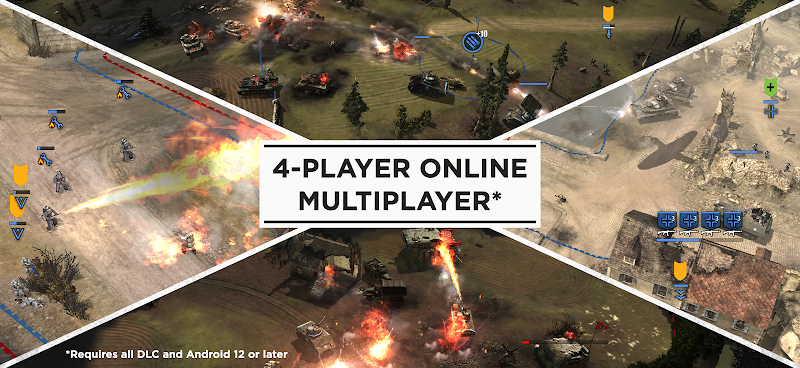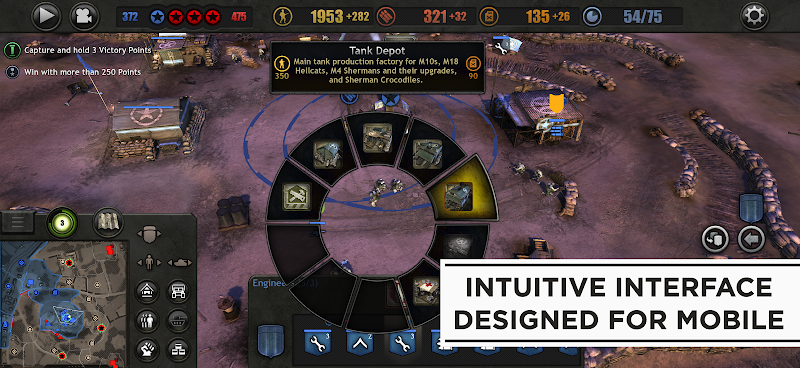Real-time strategy veterans and newcomers alike find Company of Heroes APK exhilarating, especially in Skirmish (multiplayer) matches. Unlike campaign missions, Skirmish mode demands sharp awareness, resource control, and quick tactical adjustments. If you want to improve your multiplayer game, this guide delivers battle-tested strategies, unit compositions, and decision-making tips to help you win more consistently.

The Core Flow of a Skirmish Match
A skirmish match typically unfolds in three distinct phases:
- Early Game (0–5 minutes): Focus on capturing fuel and munitions points while probing enemy positions.
- Mid Game (5–15 minutes): Transition to combined-arms play, unlock tech upgrades, and begin heavy unit production.
- Late Game (15 minutes onward): Prioritize positioning, countering enemy compositions, and holding victory points until the timer expires.
Understanding the rhythm of these phases helps you anticipate your opponent’s decisions and adjust accordingly.
Map Control and Resource Strategy
Capture and Connectivity
Resources in CoH 3 come from captured sectors such as fuel, munitions, and victory points. These sectors must stay connected to your headquarters through contiguous controlled territory. Cutting off an enemy’s supply line can completely halt their resource flow, turning the tide of battle.
Balancing Defense and Aggression
Aggressive captures provide momentum early on, but over-extension often leads to unnecessary losses. Secure key choke points while leaving at least one squad to guard your main supply line. Balanced aggression wins more matches than reckless advances.
Recapture Timing
When an opponent steals a resource node, do not rush it back blindly. Use indirect fire, smoke cover, or flanking maneuvers to recapture under safer conditions. Skilled players learn to trade space for time rather than trading units for empty ground.
Unit Composition and Counterplay
Embrace Combined Arms
While it can be tempting to spam a single powerful unit, CoH 3 rewards mixed-arms warfare. A blend of infantry, anti-tank support, vehicles, and indirect artillery usually outperforms a one-dimensional army.
Understanding Counters
-
Infantry dominate early game skirmishes but require cover and support.
-
Vehicles offer mobility yet fall quickly to dedicated AT guns.
-
Indirect fire units punish static defenses and clustered enemies.
-
Support weapons like MGs and mortars are essential for area denial.
A balanced roster creates flexibility. As one Reddit strategist aptly said, “Initiate rather than react; control your opponent’s tempo.”

Micro, Positioning, and Tactical Mastery
Use Cover and Flanking
Units in cover can survive vastly longer than those exposed. Always move between cover points and approach enemy MGs from the side. Flanking not only breaks suppression but also multiplies damage potential through surprise.
Retreat and Reinforce
When a fight is lost, retreat early and preserve veterancy. Rebuilding veteran squads costs fewer resources than replacing them. Vehicles have no retreat button, but timely withdrawal and repairs are the difference between a setback and defeat.
Grenade Timing and Area Denial
Grenades remain a high-impact tool in Skirmish battles. Throw them during distractions, not in one-on-one duels. Predict where the enemy will take cover, not where they currently stand.
Stress the Opponent’s Micro
Professional players often talk about “bandwidth warfare.” Forcing your opponent to manage too many fights at once leads to mistakes. Drop grenades, trigger suppression, or harass resource points simultaneously to overload their focus.
Bait and Punish
Leave a squad partially visible, pull it back, and catch pursuing units in a crossfire or mine trap. Smart baiting wins more fights than brute force. As GameSpot’s tactical review of CoH 3 explains, “Small skirmishes often decide the match long before tanks appear.” (GameSpot)
Faction and Playstyle Tips
Wehrmacht and Afrika Korps
The German factions rely on structured play and efficient upgrades. Build flexible lineups: Panzergrenadiers, AT guns, and medium armor rather than relying on static defenses. Prioritize flanking and preserve fuel for key vehicles.
US Forces
American forces excel at mobility. Constantly capture points, use smoke grenades to break stalemates, and combine infantry pushes with light vehicles such as the Greyhound for fast responses.
British Forces
The British thrive when controlling the tempo. Use emplacements sparingly, back them with mobile infantry, and rotate engineers for field repairs.
Common Mistakes
- Over-investing in early bunkers instead of expanding your army.
- Ignoring munitions upgrades or unit veterancy.
- Failing to counter enemy vehicles early, leading to snowball pressure.
Practical Tips and Mistakes to Avoid
- Spend resources efficiently. Floating over 600 manpower means lost tempo; always invest in reinforcements or tech.
- Use the minimap. Keep awareness of multiple flanks and movement paths.
- Experiment with Tactical Pause. In offline or co-op AI games, Tactical Pause lets you issue simultaneous orders to polish micro control.
- Watch replays. Evaluate when and how you lost map control instead of focusing solely on final battles.
- Avoid static overbuilding. Excessive defenses drain your flexibility and map presence.
Example Build Orders and Strategies
A standard 1v1 opening focuses on speed and flexibility:
- Deploy two infantry squads for early map control.
- Follow with engineers or pioneers for capping and repairs.
- Transition into a light vehicle for harassment or recon.
- Build an AT gun once enemy vehicles appear.
- Expand tech for medium armor or support artillery.
In team matches, coordinate roles: one player handles frontline pressure while another supports with artillery or anti-armor. Communication amplifies efficiency and prevents redundant builds.
Summary and Improvement Plan
Mastering Skirmish mode in Company of Heroes 3 is about combining macro-level awareness with micro-level execution. The fundamentals to internalize include:
- Securing and maintaining map control.
- Building balanced armies that can counter multiple threats.
- Managing micro actions, cover, and flanking efficiently.
- Forcing mental pressure on your opponent through multi-front harassment.
- Avoiding resource waste and over-defensive habits.
To continue improving, review your match replays, follow competitive players on YouTube or community forums, and apply one improvement goal per session. Consistent analysis and adaptation will push you from casual commander to elite strategist.
